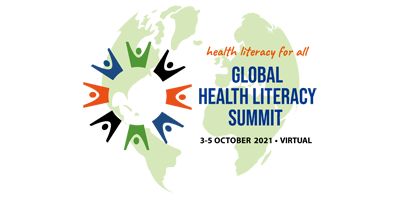Abstract Preview
Abstract
|
Title The associations between the assessment of e-health services provided during the COVID-19 pandemic and health literacy |
|
Type Oral Presentation Only |
|
Theme Global Health Literacy Summit 2021 |
|
Topic Health literacy and COVID-19 |
Authors
|
Main Author Mariusz Duplaga1 |
|
Presenting Author Mariusz Duplaga1 |
|
Co-Author |
Authors' Institution
|
Department / Institution / Country Department of Health Promotion and e-Health, Institute of Public Health / Jagiellonian University Medical College / Poland (Polska)1 |
|
Abstract Content (abstracts should be written in Size 11 font, Arial font style) Background. The COVID-19 pandemic resulted in the extensive use of e‑health services in many countries. Before the pandemic, the utilisation of remote health services has been relatively low in Poland. This has changed significantly after the Ministry of Health's encouragement in response to the epidemic threat. This study aimed to assess the association between the opinions about e‑health services, health (HL) and e‑health literacy (eHL) and sociodemographic variables. Methods. The web-based survey was performed in the representative samples of 1002 Internet users. The tools used in the study consisted of the 16-item European Health Literacy Survey questionnaire (HLS-EU-Q16), eHealth Literacy Scale (eHEALS), the questions asking about the use of e‑health services during the pandemic and the set of sociodemographic items. The satisfaction of provided e‑health services (SAT) and the support for the provision of e‑health services in the future (SUP) were included as dependent variables in univariate logistic regression models. Results. The use of e‑health services was declared by 60.5% (n=607) respondents. High SAT was declared by 46.3% (n=281) and SUP by 40.1% (n=244) of the study participants. SAT was significantly associated with HL score (OR; 95%CI: 1.13; 1.07-1.18), eHL score (1.07; 1.03-1.11), but not with sociodemographic variables. Those who participated in a remote visit in relation to chronic disease (1.49; 1.01-2.21) or needed e-prescription (1.42, 1.02-1.97) were more likely to be satisfied with e‑health service than other e-health users. SUP was significantly associated with eHL score (1.06; 1.03-1.10), but not with HL score (1.19; 0.98-1.08). SUP was also higher in inhabitants of the urban than rural areas (for comparison of inhabitants of cities >500,000 with rural areas: 2.32; 1.37-3.96), in those with the University than with non-secondary education (1.78; 1.06-2.99), and in singles than married persons (1.89; 1.31-2.74). It was also higher for the respondents using e-visit for obtaining e-prescription (1.47; 1.05-2.07). Conclusions: The development of adequate eHL and HL may be of critical importance for accelerating the use of e‑health services in society. |
Requires Audio or Video system for Presentation?: No
